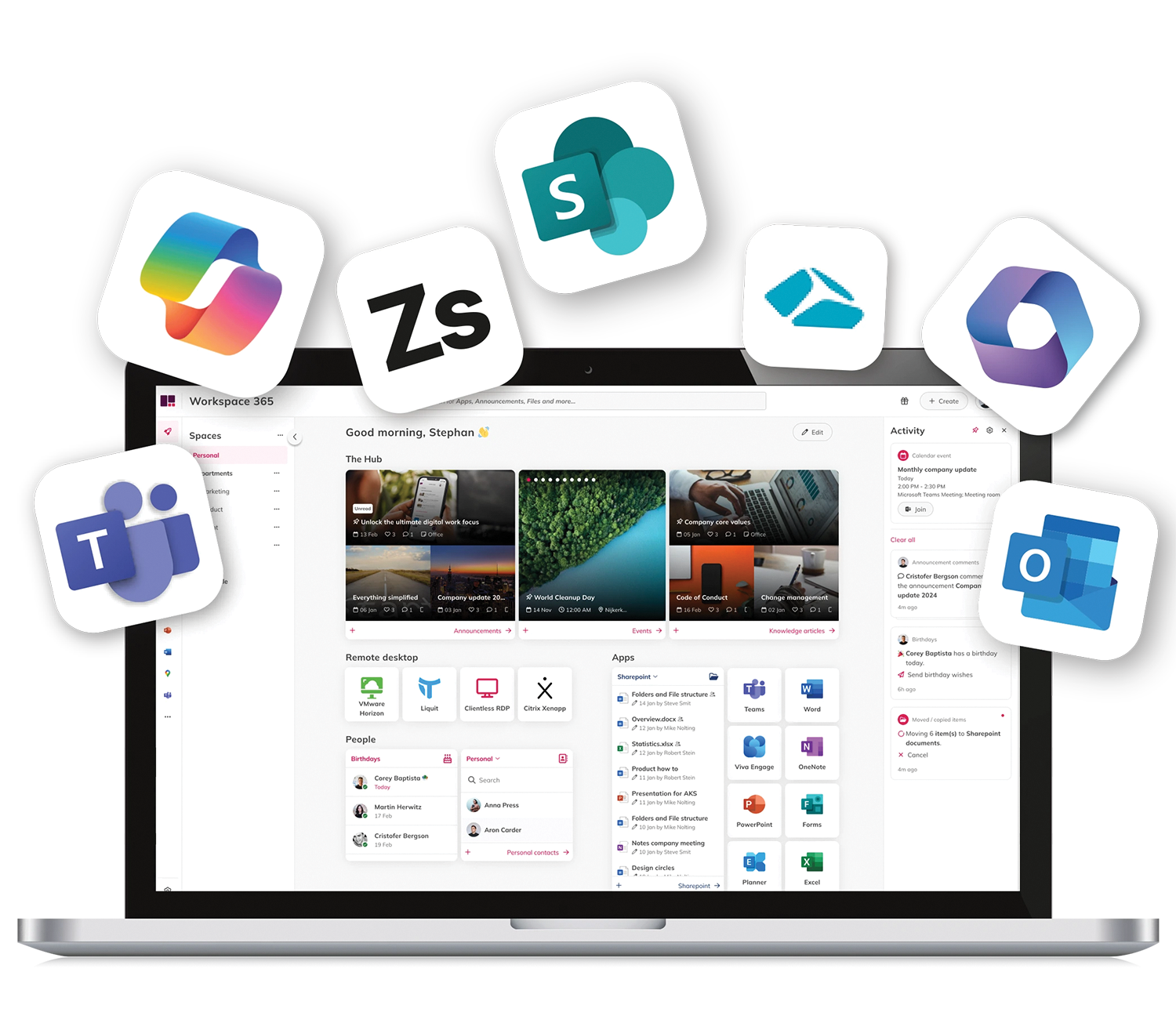In many organisations, tasks like approvals, onboarding, or document handling still involve manual steps, emails and delays. Workflow automation changes that. It removes repetitive tasks, connects systems, and helps people focus on their work.
Let’s explore what workflow automation is, how it works, and how it supports more efficient, reliable business processes, especially in a digital workplace.
What is workflow automation?
Workflow automation is the use of software to perform tasks, send information, or trigger actions without needing manual input. It helps organisations reduce errors, save time, and improve how processes run from start to finish.
Rather than relying on people to complete every step of a process, automation ensures that tasks are completed when certain conditions are met. For example, once a form is submitted, it can automatically be sent to the right person for review, logged in a system, or approved.
Whether you’re handling internal requests or customer enquiries, workflow automation makes the process faster, more consistent, and easier to manage.
What is a workflow?
A workflow is a series of connected steps that need to be followed to complete a task or process. It outlines what needs to be done, who’s responsible, and in what order things should happen.

Workflows can be simple or complex. For instance, a leave request might just need a manager’s approval, while onboarding a new employee could involve several departments and tools. Regardless of complexity, a clear workflow helps ensure nothing is missed and tasks are completed on time.
How does workflow automation work?
Workflow automation relies on a few simple building blocks: rules, triggers and actions.
First, a trigger starts the process, this could be someone filling out a form, updating a record or reaching a specific date. Rules then guide what happens next. For example, if a request meets certain conditions, it’s approved automatically. If not, it might be sent to a person for review.
Automated workflows often connect different systems. This means information can move from your CRM to your email platform, or from a form into a document archive, without anyone needing to copy and paste.
As more processes are automated, teams spend less time on admin and more time solving problems, supporting customers or driving improvements.
Benefits of workflow automation
Automating workflows brings a wide range of benefits across departments and industries:
-
Improved efficiency: Tasks that used to take hours or days are completed faster, with fewer delays.
-
Fewer errors: Reducing manual input helps prevent mistakes and missed steps.
-
Faster turnaround times: Approvals and processes move more quickly, improving service and response rates.
-
Cost savings: Automation reduces time spent on routine admin, freeing up resources for other work.
-
More consistent results: Processes run the same way every time, improving reliability and compliance.
-
Improved employee experience: Teams spend less time chasing emails or repeating tasks and more time on meaningful work.
-
Better visibility: It’s easier to track what’s happening, when, and where delays occur.
Workflow automation examples
Here are some everyday examples of how workflow automation is used in organisations:
-
Invoice processing: Incoming invoices are automatically routed to the right approver, logged, and sent to finance for payment.
-
Employee onboarding: New hires trigger workflows that set up their accounts, assign training, and notify relevant teams.
-
Customer support: Chatbots or web forms can create support tickets and notify the right teams based on urgency or topic.
-
Marketing: Lead forms trigger welcome emails, assign contacts to sales teams, or update CRM records.
-
IT access management: Requests for system access are automatically routed for approval and provisioned with set permissions.
-
HR and compliance: Leave requests, policy updates or document submissions follow clear approval and review paths.
Types of workflow automation
There’s no one-size-fits-all when it comes to automation. Some workflows follow clear rules, like sending a confirmation email when a form is submitted. These are rule-based, simple and effective.
Others respond to events. A trigger-based workflow might start when a request is logged or a deadline is reached, keeping things moving without manual follow-ups.
More advanced are AI-powered workflows, which learn patterns and help prioritise tasks, like spotting urgent support tickets based on language or past outcomes.
But not everything should run without people. Human-in-the-loop workflows add checkpoints for review, useful when judgment or oversight is needed.
In most cases, it’s a mix. Hybrid workflows combine automated steps with human input, giving you the balance of speed and control.
Workflow automation tools and software
There are many platforms that help organisations build and manage automated workflows. Popular tools include:
-
Microsoft Power Automate
-
Zapier
-
Kissflow
-
HubSpot
-
Workspace 365
Each tool has its strengths. Some are designed for IT and developers, while others are more user-friendly for business teams.
Workspace 365 integrates with these platforms to centralise workflow access and improve visibility. Instead of switching between apps, employees can see what needs action, right from their digital workspace.
How Workspace 365 simplifies workflows
Workspace 365 brings everything together in one place, helping you manage tasks, approvals and updates more easily.
You can view all your workflow actions in one overview, thanks to integrations with tools like Microsoft Teams, SharePoint, Power Automate, TOPdesk and OpenIMS.
And when you're trying to find something, whether it’s a task, document, ticket or announcement, the Global Search helps you cut through the noise. By connecting all your apps and data sources to Workspace 365 you unlock intelligent search across everything. It shows results based on relevance, your access rights and the context you’re working in, so you only see what matters to you.
No more “where was that file again?” Just a simpler way to stay focused and find what you need, fast.
—
Workflow automation plays a vital role in creating faster, more consistent processes by removing delays and connecting the tools your teams rely on. Whether you're managing internal approvals, onboarding new staff, or responding to customer enquiries, the right setup can save time, reduce errors, and improve the experience for everyone involved.
If you're looking for a platform that brings all of this together, Workspace 365 helps you simplify workflows across your digital workplace. With smart integrations, centralised tasks, and personalised access to the tools your teams need, it creates a focused, secure, and efficient environment for everyday work.
Frequently asked questions about workflow management
What are workflows in business?
A workflow is a series of steps people follow to complete a task or process within an organisation. It outlines who does what, in which order, and under what conditions. This could be anything from approving a purchase to onboarding a new team member. Clear workflows help teams work more efficiently and ensure nothing is missed, especially when tasks involve different people or tools.
What is workflow automation?
Workflow automation uses software to carry out tasks or decisions automatically, based on set rules or triggers. Instead of sending emails or moving files manually, you set up a process once and let the system handle it from there. It’s a way to save time, reduce errors and keep things moving, without constant follow-ups.
What are examples of automated workflows?
You’ll find automated workflows across almost every department. Some common examples include:
-
Invoice processing: Automatically route invoices to the right approver and log them for payment.
Employee onboarding: New hires trigger workflows that set up accounts, assign equipment or notify teams.
-
Leave approvals: A request is submitted, checked against balances, and sent to a manager, all in one flow.
Customer enquiries: Forms or chatbots raise support tickets and direct them to the right team.
-
IT access requests: Access to tools or data is approved and granted without chasing people for updates.
How do I automate a workflow?
Start small. Pick a process that takes time or often causes delays. Then:
-
Map it out: identify each step, who’s involved, and what actions are taken.
-
Spot the repetition: find where manual steps could be replaced with triggers or rules.
-
Choose the right tool: platforms like Power Automate or Workspace 365 can help you set it all up.
-
Test and refine: run it with a few people, gather feedback, and make improvements as you go
What tools can I use for workflow automation?
There are many tools available, depending on your needs and technical know-how:
-
Microsoft Power Automate: great for those already using Microsoft 365.
-
Zapier: ideal for connecting lots of different cloud apps without coding.
-
Kissflow: user-friendly and suited for business teams.
-
HubSpot: includes automation for sales and marketing.
-
Workspace 365: brings all your actions into one place, so you don’t need to switch between tools.
What are the benefits of workflow automation?
There are plenty of benefits to workflow automation, and they add up quickly. Processes move faster because actions happen as soon as conditions are met. With less manual input, there’s also less room for errors, making tasks more reliable. Automation brings consistency too, as every process follows the same steps each time. It saves time by reducing repetitive admin, so people can focus on more valuable work. You also get better visibility, making it easier to see what’s happening and where things might get held up. And most importantly, employees feel the difference, spending less time chasing tasks and more time using their skills. In short, automation doesn’t just help things move faster, it makes work feel easier.






